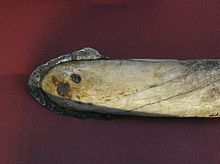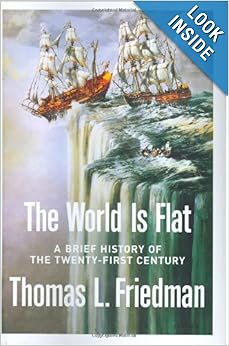 "Get in here!"
"Get in here!"My colleague at the conference slapped a name tag on me and shoved me into a room. I kept a perilous grip on my glass of wine and took my place at the front of a crowd gathered around an empty chair. The strangers surrounding me also bore name tags, but, unlike me, they had some idea of what was going on.
I had assumed that my tag would have my name on it. It didn't. (What was I thinking?) Someone had christened me "Geoffrey Chaucer." How odd. I looked to the person next to me and saw that he was wearing a tag too. What did his say? Mulliere? Thoms Aquinas? No, he too was to be known as "Geoffrey Chaucer." I gave him a puzzled glance, hoping to indicate that I was confused, but he did not share my disarray. He knew what was going on and seemed to be especially reserved.
Then I realized that everyone was named "Geoffrey Chaucer." And everyone but me was geared up for something special.
My adviser (who I didn't realize was even at the conference) appeared and stood on the chair before us. "Will the real Geoffrey Chaucer please come forward?" she announced.
I nearly took a step. It was written on my name tag, wasn't it? Was that why my colleague had pushed me in here with both hands? To play Chaucer?
See? We both have beards. Why not?
The room was silent. For one gut-wrenching moment it seemed that nothing was going to happen.
Finally, someone stepped forward--the man who had been standing next to me. He was the real "Chaucer." Apparently.
I had stumbled into a momentous occasion. I didn't know it at the time, but this guy had been writing and blogging hilarious stuff as if he were really Geoffrey Chaucer and until that moment had remained completely anonymous. I got a front seat at his coming out party.
I've noticed medievalists are especially good at maintaining our sense of humor, and "Chaucer" is a perfect example. Here are some excerpts from his Twitter account, Chaucer Doth Tweet:
Wynter Fashion Tippe: Love somebodye. For real. Nat by cause yt ys convenient or fun. Love by cause thou must. Accessorize wyth a hat.
— Chaucer Doth Tweet (@LeVostreGC) December 7, 2014
What doth bifal yn the otherworlde of Fayerie, that thing doth staye yn the otherworlde of Fayerie. Sumtymes.
— Chaucer Doth Tweet (@LeVostreGC) October 13, 2014
'Ich am interestid yn writinge for yower websyte. Ynstead of a resumé, plese accept thys huge unfinisshed set of storyes about pilgrims.'
— Chaucer Doth Tweet (@LeVostreGC) October 7, 2014
Hilarious. He's got a blog, and a book. The book is actually what they were selling on the day that I took part in our "I am Sparticus" gag, and a lot of medievalists were carrying them around at that conference.
See? Historians can be funny.

%2C_f.1_-_BL_Add_MS_5141.jpg/640px-Portrait_of_Chaucer_-_Portrait_and_Life_of_Chaucer_(16th_C)%2C_f.1_-_BL_Add_MS_5141.jpg)




